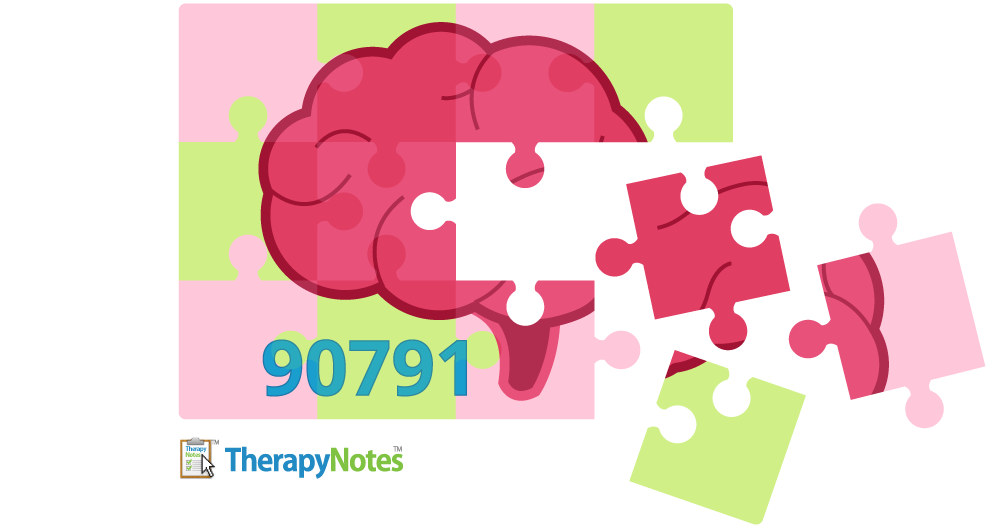What You Need to Know About CPT Code 90791
By TherapyNotes, LLC on July 18, 2018


The CPT code 90791 can be tricky, so we thought we’d try to clear up any confusion you may have. Here’s what you need to know.
What is 90791?
The 90791 code is used for psychiatric diagnostic evaluations without medical services. It was created in 2013, along with 90792, to replace the former psychiatric diagnostic evaluation codes 90801 and 90802.
According to the CPT manual, 90791 is an “integrated biopsychosocial assessment, including history, mental status, and recommendations.” The manual goes on to say that the evaluation may include “communication with family or other sources and review and ordering of diagnostic studies.”
In general, the code can be used by psychiatrists, clinical psychologists, licensed professional counselors, licensed clinical social workers, and licensed marriage and family therapists. However, when billing to Medicare and Medicaid, certain states may not allow reimbursement for non-psychiatrists, so be sure to check your state’s laws first.
Comparing 90791 and 90792
There’s one major difference between 90791 and 90792: the use of medical services.
Whereas both codes are used for psychiatric diagnostic evaluations, 90791 can’t include medical services and 90792 can. Medical services may consist of any medical activity, such as writing prescriptions, performing physical exams, and modifying psychiatric treatment.
You can bill 90791 and 90792 in conjunction with the interactive complexity code (90785), but can't bill both codes on the same day as psychotherapy or E/M (evaluation and management) service performed by the same individual for the same patient.
Billing 90791 with 90792
You can bill 90791 and 90792 on the same day if:
- The 90791 assessment is completed by a clinician (like a social worker) and a 90792 assessment is completed by a psychiatrist
- It aligns with the payer policy
If you bill both codes on the same day, though, it’s possible the payer will question why two clinicians did an initial evaluation and may not be willing to reimburse for both codes.
To possibly get around this, you could have the clinician bill for 90791 and the psychiatrist bill using the E/M consult codes (99241-99245). You could also have the psychiatrist use the initial hospital care E/M codes (99221-99225), which would cover both the consult and initial psychiatric evaluation, but that requires the patient being admitted to the inpatient psychiatric service.
We’ll cover other codes in future posts, so make sure to subscribe to the TherapyNotes™ blog for more.
Sources: Frequently Asked Questions Coding and Documentation, American Psychiatric Association; Understanding Billing Restrictions for Behavioral Health Providers, University of Michigan; CPT Code Changes for 2013, National Council for Community Behavioral Healthcare; CPT Coding Q&As From Helpline, American Psychiatric Association; Understanding Billing Restrictions for Behavioral Health Providers, University of Michigan
* The content of this post is intended to serve as general advice and information. It is not to be taken as legal advice and may not account for all rules and regulations in every jurisdiction. For legal advice, please contact an attorney.
Get more content like this, delivered right to your inbox. Subscribe to our newsletter.
More Content You'll Enjoy
The Best Practice Fusion Alternative for Mental Health

Supercharge your Documentation with TherapyFuel!

